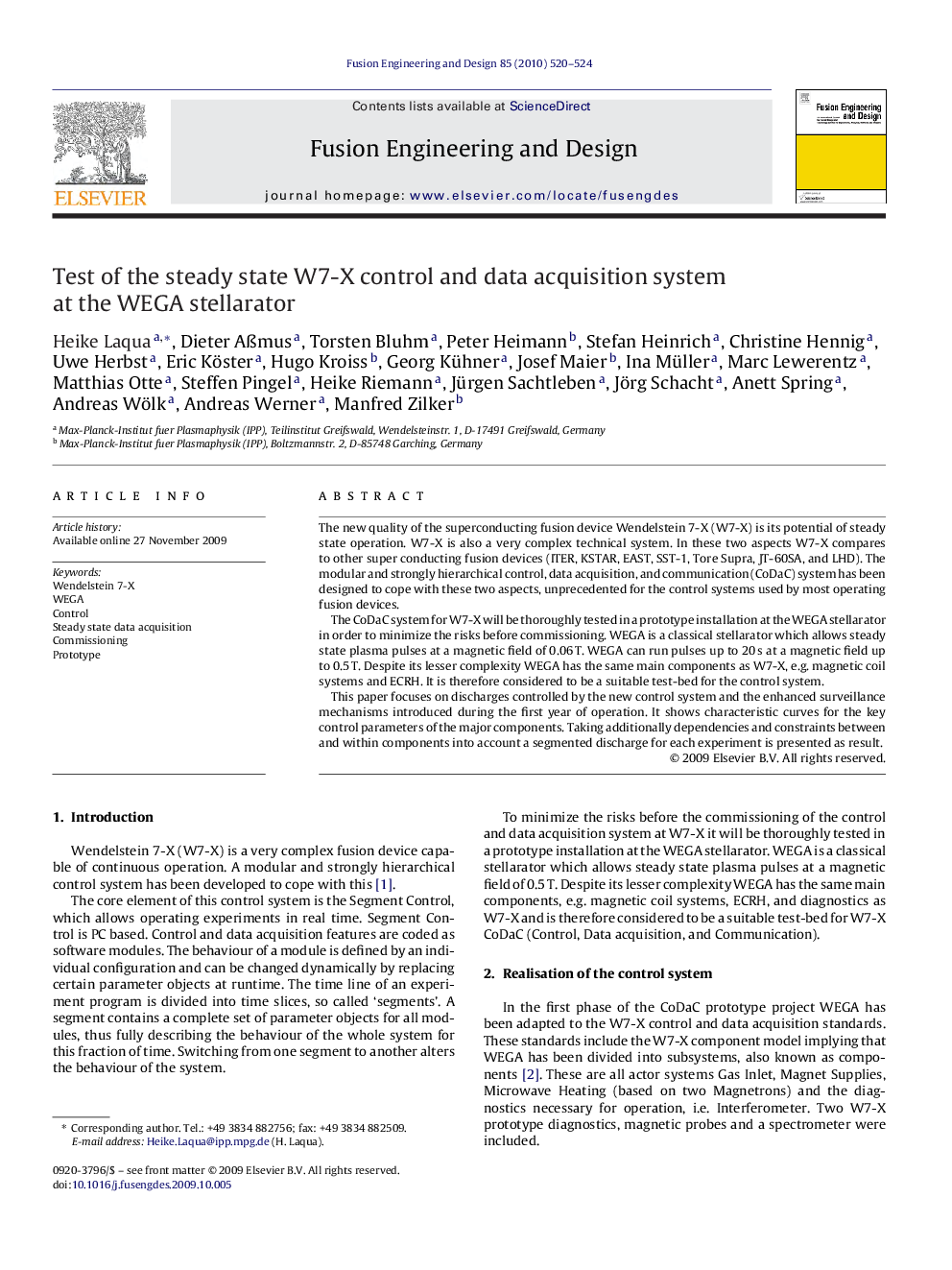| Article ID | Journal | Published Year | Pages | File Type |
|---|---|---|---|---|
| 272360 | Fusion Engineering and Design | 2010 | 5 Pages |
The new quality of the superconducting fusion device Wendelstein 7-X (W7-X) is its potential of steady state operation. W7-X is also a very complex technical system. In these two aspects W7-X compares to other super conducting fusion devices (ITER, KSTAR, EAST, SST-1, Tore Supra, JT-60SA, and LHD). The modular and strongly hierarchical control, data acquisition, and communication (CoDaC) system has been designed to cope with these two aspects, unprecedented for the control systems used by most operating fusion devices.The CoDaC system for W7-X will be thoroughly tested in a prototype installation at the WEGA stellarator in order to minimize the risks before commissioning. WEGA is a classical stellarator which allows steady state plasma pulses at a magnetic field of 0.06 T. WEGA can run pulses up to 20 s at a magnetic field up to 0.5 T. Despite its lesser complexity WEGA has the same main components as W7-X, e.g. magnetic coil systems and ECRH. It is therefore considered to be a suitable test-bed for the control system.This paper focuses on discharges controlled by the new control system and the enhanced surveillance mechanisms introduced during the first year of operation. It shows characteristic curves for the key control parameters of the major components. Taking additionally dependencies and constraints between and within components into account a segmented discharge for each experiment is presented as result.
